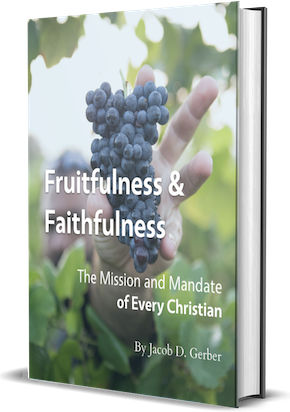On the night before Jesus was crucified, he observed Passover with his disciples. The timing of these events was not coincidental–Jesus wanted his disciples to see how the Passover of old had always pointed to his death at the cross. So, Jesus said to his disciples, “I have earnestly desired to eat this Passover with you before I suffer. For I tell you I will not eat it until it is fulfilled in the kingdom of God” (Luke 22:15-16).
Then, in the middle of the Passover feast, Jesus made the connection explicit between Passover and the sacrifice he was about to endure. He broke the bread and explained that “This is my body, which is given for you.” He took the cup and explained that “This cup that is poured out for you is the new covenant in my blood.”
Why did Jesus choose the Passover to inaugurate the Lord’s Supper and to explain the significance of his looming death on the cross?
The Lord’s Supper and the Passover Salvation
At Passover, Israelites remembered God’s salvation for his people when the were enslaved in Egypt. At the institution of Passover, Moses instructed the people:
And when your children say to you, “What do you mean by this service?” you shall say, “It is the sacrifice of the LORD’s Passover, for he passed over the houses of the people of Israel in Egypt, when he struck the Egyptians but spared our houses.” (Exodus 12:26-27)
To free the people of Israel from their bondage, YHWH struck down all the firstborn from among the Egyptians, but passed over the households of the people of Israel. This Tenth Plague from YHWH finally broke Pharaoh to the point that he let God’s people go.
At the inaugural Lord’s Supper, Jesus was pointing forward to a new salvation that he was about to secure, where he would free God’s people from bondage–not bondage to Egypt, but bondage to sin and death.
The Lord’s Supper and the Passover Lamb
At Passover, YHWH commanded the Israelites to slaughter a lamb, roast it, and eat it. Also, he commanded them to take the lamb’s blood and smear it on their doorframes. When YHWH passed through Egypt to strike down every firstborn in the land, he promised to pass over any houses where he saw the blood.
Paul, writing to the Corinthians, exclaims that “Christ, our Passover lamb, has been sacrificed!” (1 Corinthians 5:7). Just as the Passover lamb had to be sacrified to save the Israelites, so Christ had to be sacrificed to save us.
At the inaugural Lord’s Supper, Jesus revealed himself to be the fulfillment of all that the Passover had anticipated. Jesus was the ultimate Passover Lamb, and every Passover celebration up to that point had looked forward to his coming.
The Lord’s Supper and the Passover Death of the Firstborn
But at the cross, Jesus would not become only the sacrificial victim; for our sake, Jesus would also become the Enemy. For our sake, God’s own, beloved Firstborn Son was struck down as though he were an Egyptian.
Jesus’ death was not only a sacrifice of love that he offered up to his Father for us. At the cross, Jesus also took upon himself the full weight of the wrath of God for our sins. The One who knew no sin became sin for us in order that we might become the righteousness of God.
At the Passover, when YHWH passed over his people, he knew that one day he would not pass over his own Son, but that he would strike him down because of our sin.
At the inaugural Lord’s Supper, Jesus announced his intention to become his Father’s Enemy at the cross so that we might become the Father’s beloved children along with him.
